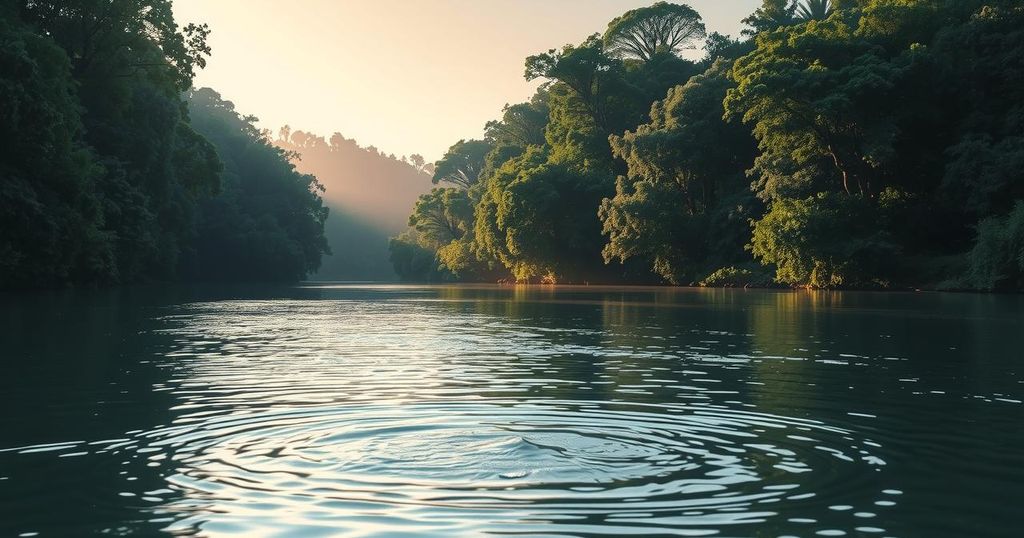World news
AFP, AFRICA, BERTRAND BISIMWA, CONGO, CONGO (KINSHASA), DEMOCRATIC REPUBLIC OF CONGO, DEMOCRATIC REPUBLIC OF THE CONGO, DISPLACEMENT, DR CONGO, DRC, EUROPE, EXTREMISM, FELIX TSHISEKEDI, FRANCE, GOMA, HUMANITARIAN, JAMAICA KELA, KINSHASA, M23, NDTV, NORTH AMERICA, REUTERS, RWANDA, UN, UNITED STATES, VIOLENCE, WAR
Stella Nguyen
0 Comments
Escalating Violence in Goma: The Conflict’s Historical Roots and Humanitarian Crisis
The Democratic Republic of Congo is experiencing severe conflict in Goma, with Rwandan-backed M23 rebels taking control of key areas, including the airport. The violence has resulted in over 100 deaths and thousands displaced. International leaders are advocating for a ceasefire amidst a humanitarian crisis exacerbated by medical facility shortages. High-level discussions are ongoing between DRC and Rwandan leaders, but historical tensions complicate resolutions.
In Goma, Democratic Republic of Congo, security forces are overwhelmed by escalating violence linked to Rwandan-backed M23 rebels, who have gained significant ground in the city. This surge represents the most severe escalation in the longstanding conflict, resulting in the rebels reportedly seizing control of vital infrastructure, including the airport. The DRC’s military has suffered significant losses, with over 1,200 soldiers surrendering, jeopardizing aid routes essential for displaced populations.
Amid the turmoil, witness Destin Jamaica Kela recounted the rapid deterioration of security, stating, “Bombs were falling and killing other people everywhere, we saw dead bodies.” The M23’s leadership claimed victory over remaining resistance in Goma, asserting their commitment to restoring peace and stability in the region. Concurrently, protests erupted in Kinshasa, where citizens expressed furor at perceived foreign intrusions in Congolese affairs.
The ongoing conflict has caused substantial casualties, with more than 100 individuals reported dead and nearly 1,000 injured, leading to critical shortages in medical facilities. Hospitals are struggling with overwhelming patient volumes, necessitating drastic measures to sustain operations, as described by one hospital manager.
In response to the crisis, an emergency summit was convened involving DRC President Felix Tshisekedi and Rwandan President Paul Kagame, amidst calls from international leaders for an immediate ceasefire. Notably, U.S. Secretary of State Marco Rubio emphasized the importance of respecting territorial sovereignty during dialogue with President Kagame.
The M23, primarily composed of ethnic Tutsi fighters, continues to be a derivative of a historical pattern of conflict linked to Rwanda’s past genocide. Rwanda claims that remnants of Hutu extremist groups threaten its national security while Congo accuses Rwanda of exploiting local militias to plunder resources. Unlike previous instances, global pressure may be lacking this time, with key players hesitant to confront Rwanda’s established role in the region.
The Democratic Republic of Congo has been plagued by conflict since the aftermath of the Rwandan Genocide approximately 30 years ago, leading to a series of insurgencies particularly involving the M23 rebel group, composed predominantly of ethnic Tutsis. This group has garnered support from the Rwandan government, which cites security threats from Hutu militias allegedly operating within Congo. The conflict has often attracted international attention, yet responses have frequently been muted due to Rwanda’s strategic positioning in East Africa.
The violence in Goma underscores the complex interplay of regional tensions and historical grievances that continue to fuel conflict in the Democratic Republic of Congo. The recent surge in military activity by M23 rebels, aided by Rwanda, has led to a humanitarian crisis marked by significant casualties and medical shortages. The international community’s response remains cautious, balancing calls for intervention with geopolitical considerations surrounding Rwanda’s influence and stability in the region.
Original Source: www.ndtv.com




Post Comment